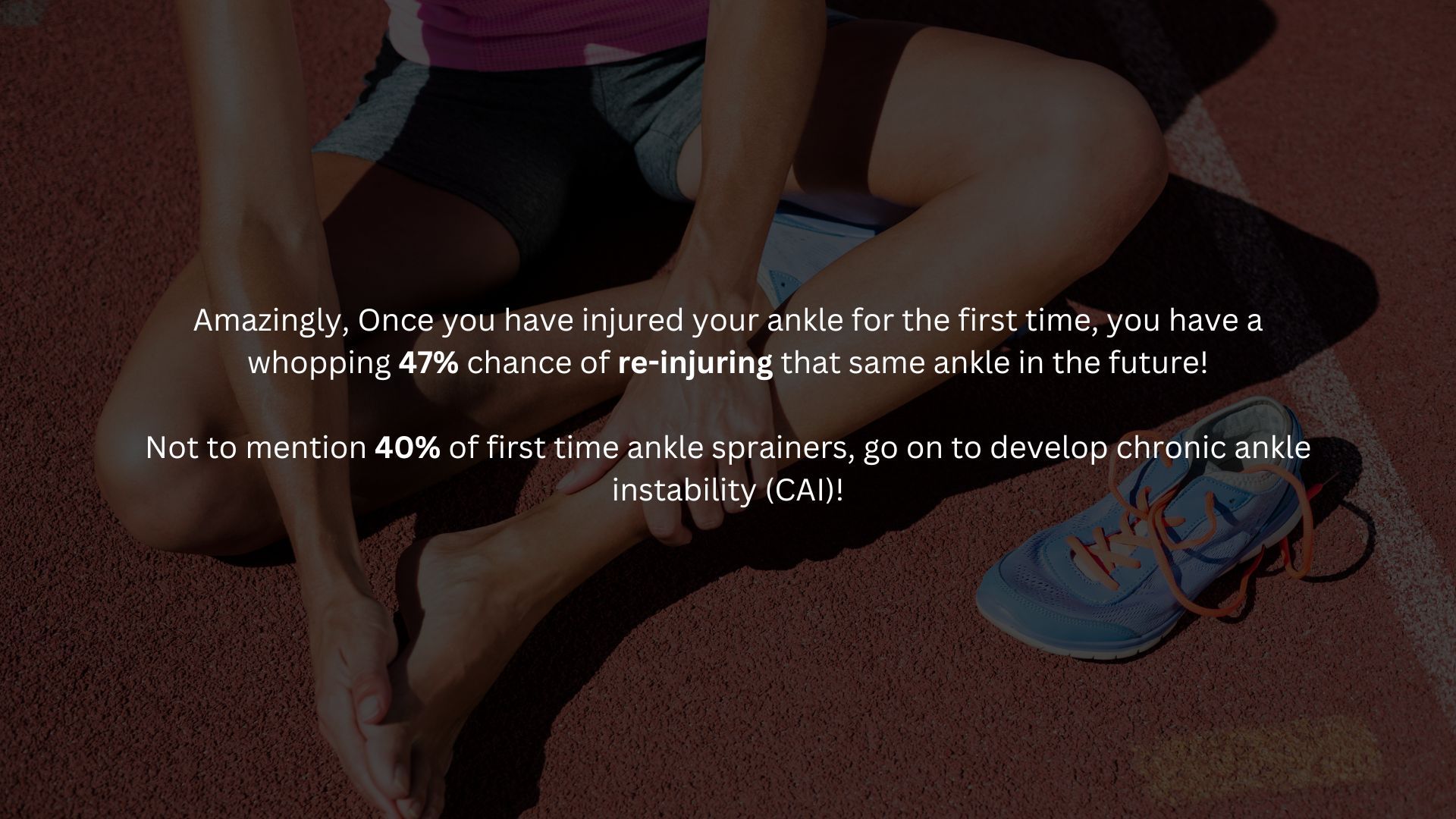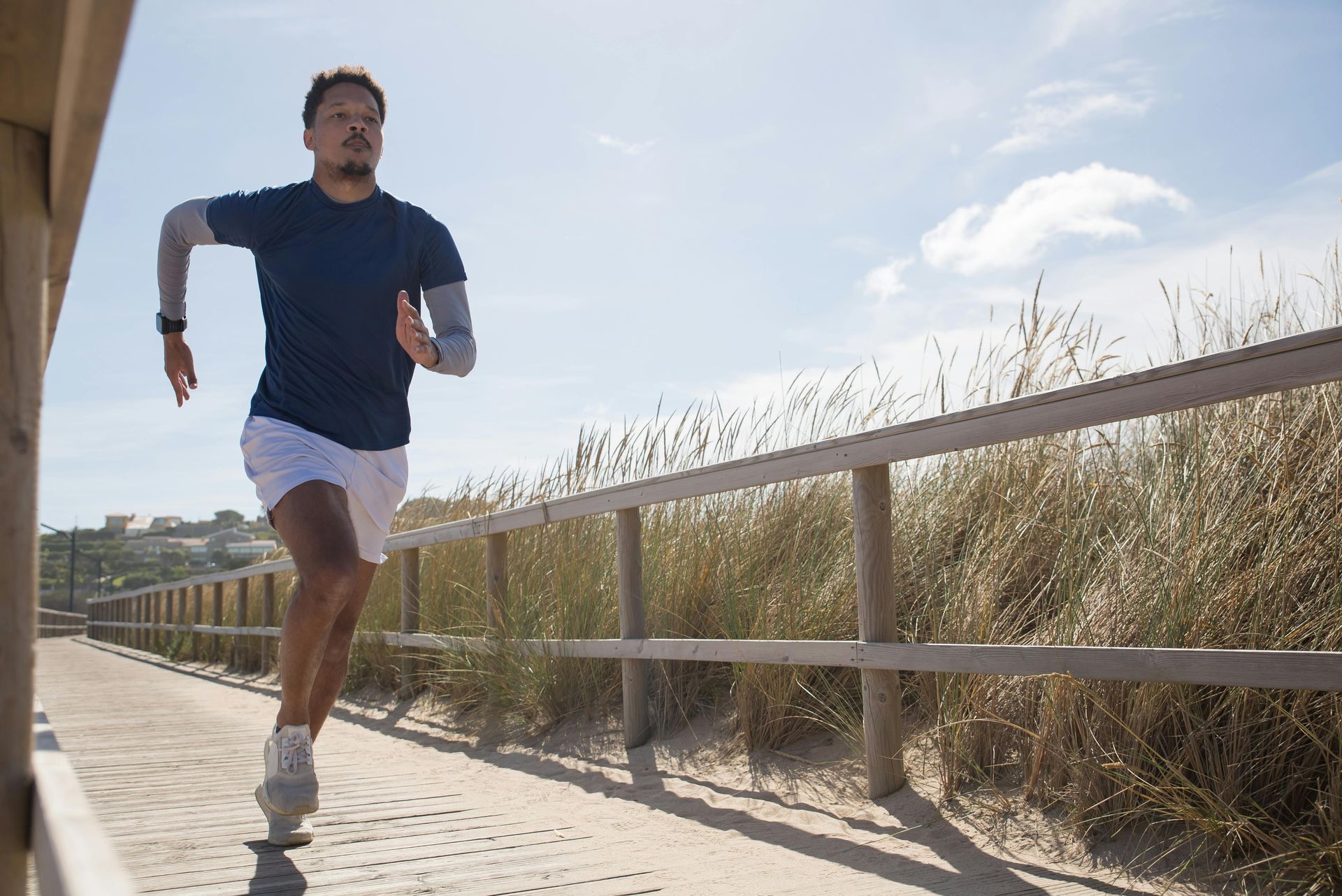The ("Not So") Simple Ankle Injury

Picture this : you're walking in the sunshine, whistling dixie and having the best day. All of a sudden you step wrong, and your ankle twists. Ouch!
You've got yourself a ‘simple’ ankle sprain, right? Well, not so fast. What might seem like a minor injury can sometimes turn into a bigger problem than you'd expect.
Here's the lowdown: An ankle sprain happens when the bands of tissue (ligaments) that hold your ankle bones together get stretched or torn.
You might think rest, ice, and a bit of elevation will sort it out – and sometimes they do. But other times, there's more going on under the surface.
Amazingly, Once you have injured your ankle for the first time, you have a whopping 47% chance of re-injuring that same ankle in the future! Not to mention 40% of first time ankle sprainers, go on to develop Chronic Ankle Instability (CAI)!

One of the major issues is misdiagnosis.
What seems like a basic sprain might actually involve broken bones or damage to joint cartilage.
An early sign that there might be a fractured bone, is that you are unable to walk for 4 steps at the time of injury.
If your swelling persists > 5-7 days, and the whole joint is ‘fat’ , there could be a chance that you have damaged the cartilage.
If these more serious problems aren't recognised early & treated properly, they can lead to ongoing pain, swelling and trouble moving your ankle.
Then there's the rehab part.
Even after the pain & swelling fades, it's crucial to do exercises to strengthen and stabilise your ankle. Skipping this step could mean you're more likely to sprain it again in the future.
A rehab program will have multiple objectives:
1. Reduce swelling
2. Restore normal movement
3. Re-gain muscle strength
4. Re-gain balance & stability
5. Restore functional requirements – for example, running, sprinting & change of direction.
As with any rehab program, the type of exercises involved & the time it takes to get back to doing the things that you love, is a lesson in horses for courses!
Say you’re an avid hiker in the rough terrain of the hinterlands. We need to design your program to include a lot of training on rugged and unpredictable surfaces.
If you’re a field -based athlete who must stop on a dime and change direction, then we need to work on a lot of fast hopping and landing drills.
If you’re just a casual walker through the park 4 days per week, then we can work on some moderate level balance and stability and the length of the program will naturally be shorter.
And let's not forget about the mental toll. If you keep spraining your ankle, it can mess with your confidence and stop you from being as active as you'd like – which isn't great for your overall health.
Long story short: Ankle sprains might seem like no big deal, but they can cause serious trouble if you don't take care of them properly.
So, next time you twist your ankle, don't just shrug it off. Give it the attention it deserves to avoid bigger problems down the road.
Come in to see our expert clinicians and get a comprehensive rehab program tailored to your needs.
Early assessment & intervention is the key!










